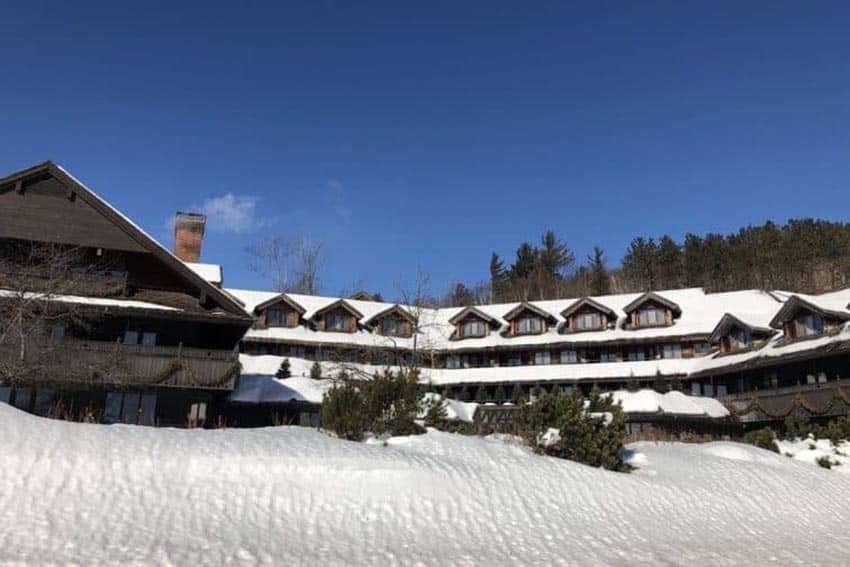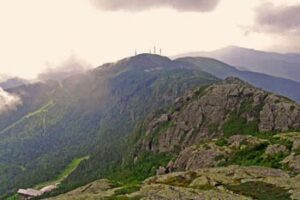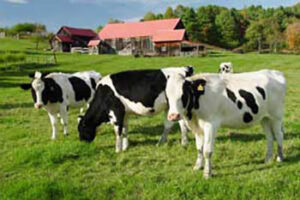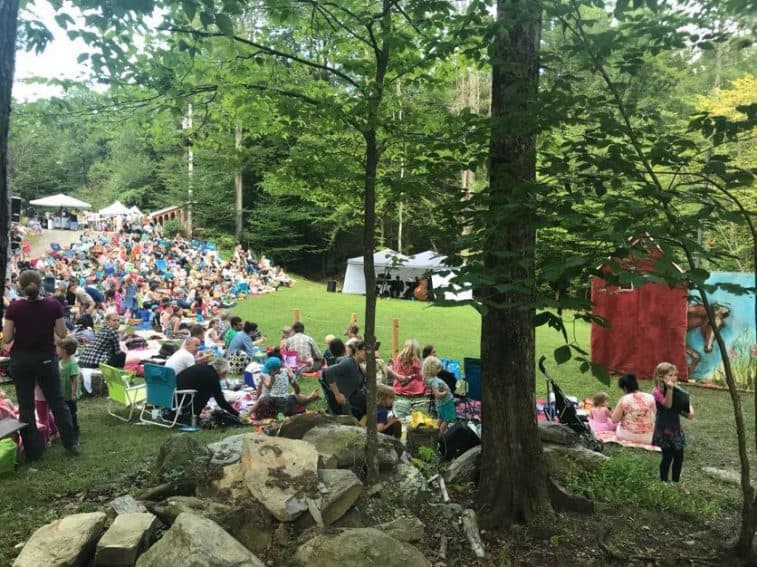
Blending Farming, the Arts, History, & Horses in Vermont
By Taylor Owens
I began my drive into southern Vermont bright and early at 6:30 am. The excitement that comes every time you take a weekend road trip was filling my chest as we embarked on the foggy, summer morning drive.

Vermont turned out to be a treasure trove of thought-provoking locations, events, and people with no shortage of
things to do, and adventures to embark on.
If you’re looking for a relaxing getaway that also fuels your curiosity for all things local, green, historic, and artistic, then a short trip to this New England state is sure to fit the bill!
The first stop on the journey was a lesser-known location in Townshend, Vermont where all things Friesians are taking place.
Friesians of Majesty
Friesians of Majesty is located in the heart of Vermont’s Green Mountains on a 650-acre full-service breeding and training facility for Friesian horses.

Friesians of Majesty is the largest Friesian breeding farm in the United States, and it is the only farm in Vermont to offer a variety of different equine experiences for any horse lover or enthusiast.
Horse sales, breeding, camps, training, riding lessons, driving lessons, performances, getaways, horse-drawn limousine services, and carriage/sleigh are all offered at, or by, the farm in Townshend.
Owners Robert and Laurie Labrie are two people seeking equine perfection wrapped up in plenty of love, care, and genuine kinship with the horses at Friesians of Majesty.
During our tour of the property, owners Robert and Laurie Labrie were able to show us around the grounds, introduce us to some of the horses, and explain the shows and performances that the horses take part in on the farm.
The performance presented at the farm is held in a large arena complete with a quaint seating area for viewers to experience the Friesians up close.

Kind Horses
Owner Laurie shared that the best part about spending time with Friesian horses is their “kind and gentle temperament.”
The tour and show are a total of 2 ½ hours long with time to interact with the babies of the main breeding stallions on the farm, Othello and Mathijs, in the mare/foal barn.
The farm also offers snowy sleigh rides driven by the Friesians during the winter and holiday season.
To catch a performance and tour, visit their website to view the schedule and call (802)-365-7526 to book a date for a group.
If you are a solo traveler, the schedule shows which dates the productions are taking place. The cost is $25 per person with walk-ins welcome during scheduled dates for groups.
Hildene, The Lincoln Family Home

Beautiful gardens, cheese-making, historical exhibits with modern implications, and everything Lincoln awaits each visitor when they make a trip to Hildene.
Hildene is the Lincoln Family Home, and it is considered to be the most important Lincoln site outside of Springfield, Illinois. Hildene was the home to Robert and Mary Lincoln, and it has been home to three generations of President Lincoln’s descendants for 70 years.
The name “Hildene” derives from two words in Olde English: “hil” meaning hill, and “dene” meaning valley with a stream. Combining these words created “Hildene.”
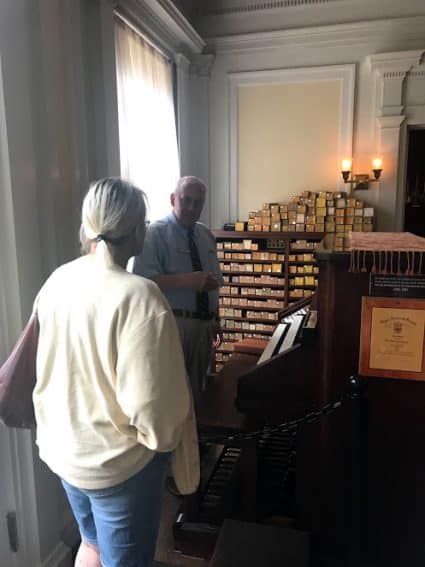
The tour started off at an immersive exhibit about the famous Pullman palace cars. The Sunbeam, a 1903 Pullman car, is located on Hildene property in conjunction with Robert Lincoln’s position as president of the company.
This thought-provoking exhibit tells the stories of many Voices: those of the company, society, the black Pullman porters, and the voices of the people who view the exhibit.
Guests are invited to step into the Sunbeam, take a look around, and chat with the docent inside.
A docent inside the car explained that “if you were in a Pullman car, you were definitely at the end of the train,” and that it “was the most luxurious way to travel back in its day.”
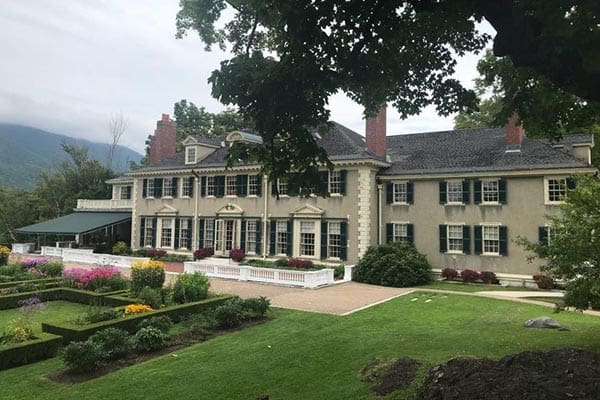
Tours of the home are also available at Hildene with views from the family’s formal garden looking out on the Taconic and Green Mountains.
The tour moves along to the Goat Dairy at Hildene Farm where goat chevre is produced. Guests are able to follow the process of creating cheese by seeing the different rooms and stages.
At Hildene, it is clear that “everyone who works here really loves their job, nothing’s shortcutted, and everyone
cares deeply about what they’re doing,” according to Paula Maynard, the Press Director at Hildene.

Hildene is open daily year-round from 9:30 a.m. to 4:30 p.m. Visit Hildene on their website for more information about tickets, exhibits, and classes. General admission is $23 for adults, $6 for youth, and free for children under 6.
The Incredible Shelburne Museum

The Shelburne Museum is home to thirty-nine buildings, more than twenty gardens, and about 100,000 artifacts spread out over forty-five acres!
This is truly the perfect place to completely lose yourself in history, art, and culture for a day, or even two.
The museum holds a steamboat, passenger train, and covered bridge that are all open to be explored by museum visitors.
Docents are waiting around each corner to give you little tidbits of information and stories about artifacts, buildings, and the people of the past.

A docent aboard the Ticonderoga steamboat described his experience reconstructing the boat as being a “year-round, and fun, job” where he “continued to give tours of the boat during reconstruction and teach the history of the steam.”
Several of the museum’s buildings had been buildings that were located in other states and were brought to Shelburne to set up permanent residency on the museum’s grounds. These buildings may be toured, and many of them have been restored to their formal glory.

Currently, intriguing exhibits such as the Dorset House, In the Garden, Playing Cowboy, Crystal Cawley, and Bench Space are all displayed on the museum grounds.
To buy tickets, view current exhibits, and explore upcoming events, visit the museum’s website.
Farm to Ballet
Imagine walking into a small, private farm on a summer evening, seeing plenty of families set up on the lawn to see a show, and a food truck posted up to serve woodfired pizzas.
The Farm to Ballet Project is a dance project intended to celebrate Vermont’s farming culture while expanding classical ballet’s audience.
The project, directed by Chatch Pregger, is a full-length production that reinterprets classical ballet choreography to tell the story of a Vermont farm from Spring to Fall.
This show was completely sold out when we arrived with an audience of all ages.

The performance took place on a field in the middle of Moonrise Farms with people surrounding the “stage” in a semi-circle of lawn chairs and picnic blankets.
The dancers emerged from the rooster’s perch and came dancing onto the lawn in their costumes.
Dancers were dressed as vegetables and farm animals and were accompanied by a live band for the entirety of the show.
Each of the pieces played by the band led the dancers into performing the different stages of planting, irrigating, tending, and then harvesting the farm’s produce.
The show then ends at farm share pick-up as winter is starting to roll in.

Director and lead dancer, Chatch Pregger, explained that realizing ballet could be done on the grass kick-started the project.
Pregger wanted to bring together what it would feel like to be at ballet and a normal grill-out on the lawn with your family.
“We split the money with the farm and then it’s a fundraiser that goes to regenerative projects. All of the farms that we work with are all raising money to do something,” explained Pregger.

The Farm to Ballet Project runs through July and August each year. For more information on dates and times of shows, visit the Farm to Ballet Project’s website.
Vermont is full of beautiful scenery, intentional museums, and committed people, and it is not a travel location to be missed!
- Vermont: History, Horses, & the Arts - September 6, 2018
- Stops in NW Arkansas for a Hungry Outdoorsman - September 5, 2018
- The Best Guide to River Cruising in Europe & the USA - September 4, 2018


